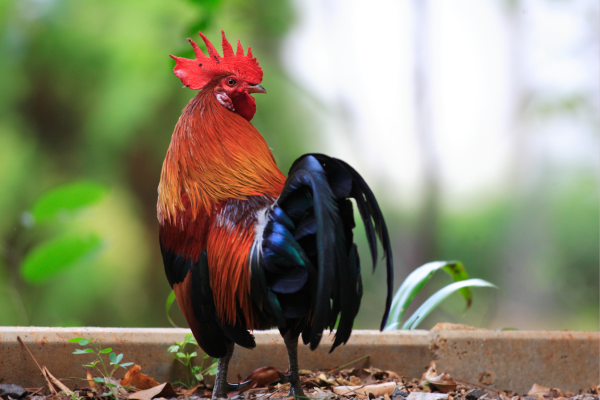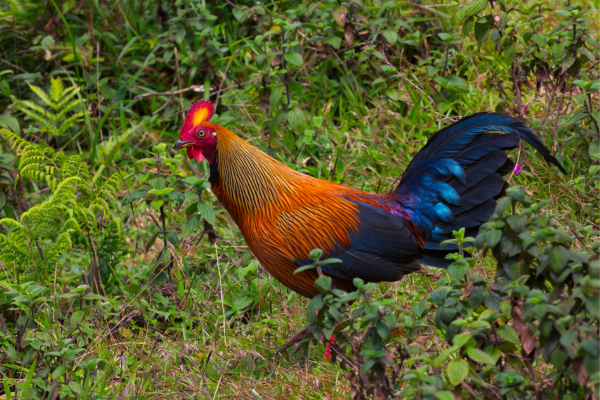Sri Lanka Junglefowl: A Vibrant Symbol of Natural Heritage – By Nadeeka – eLanka

Sri Lanka, an island nation nestled in the Indian Ocean, is not only renowned for its rich cultural tapestry but also for its diverse and unique wildlife. Among the fascinating species that call this tropical paradise home, the Sri Lanka Junglefowl stands out as a vibrant symbol of the island’s natural heritage. Let’s delve into the intriguing world of this colorful bird, exploring its characteristics, significance, and the role it plays in the island’s ecosystems.
Introduction to the Sri Lanka Junglefowl:
The Sri Lanka Junglefowl (Gallus lafayettii) is a species of bird endemic to the island, making it a true representative of the country’s biodiversity. Belonging to the family Phasianidae, this bird is closely related to the common domestic chicken but possesses distinct features that set it apart.

Distinctive Features:
The male Sri Lanka Junglefowl is a striking bird, characterized by its vibrant plumage. With a combination of vivid red, orange, and yellow feathers, along with iridescent blue and green highlights, the male junglefowl is a visual spectacle. The female, in contrast, has more subdued brown and buff-colored plumage, allowing her to blend seamlessly into the jungle environment where she nests.
Habitat and Distribution:
The Sri Lanka Junglefowl primarily inhabits the dense forests, grasslands, and scrub jungles of Sri Lanka. Its distribution spans across different altitudes, from lowlands to the higher elevations of the central hills. These birds are adapted to diverse habitats, showcasing the island’s ecological richness.
Behavior and Social Structure:
Sri Lanka Junglefowl are known for their diurnal habits, being most active during the day. They are ground-dwelling birds, foraging for seeds, insects, and small invertebrates. The male junglefowl is famous for its elaborate courtship displays, which involve vibrant plumage displays and impressive vocalizations to attract a mate.
Cultural Significance:
The Sri Lanka Junglefowl holds cultural significance in Sri Lanka, so much so that it is the national bird of the country. Its image adorns various symbols and emblems, showcasing its importance in the nation’s identity. The junglefowl’s vibrant appearance has also inspired traditional art and folklore, further cementing its place in Sri Lankan culture.
Conservation Challenges:
While the Sri Lanka Junglefowl is not currently classified as endangered, conservation efforts are essential to ensure its continued survival. Loss of habitat due to deforestation, hunting, and the potential threat of interbreeding with domestic chickens are challenges that need attention to safeguard this iconic species.
Tourism and Birdwatching:
For nature enthusiasts and birdwatchers, Sri Lanka offers excellent opportunities to observe the Junglefowl in its natural habitat. National parks and wildlife reserves, such as Yala National Park and Sinharaja Forest Reserve, provide glimpses of these colorful birds amidst the lush landscapes.
Conclusion:
The Sri Lanka Junglefowl, with its vibrant plumage and cultural significance, serves as a testament to the biological diversity and natural beauty of Sri Lanka. As the national bird, it stands proudly as a symbol of the island’s unique ecological heritage. Conservation efforts and responsible tourism play crucial roles in ensuring that future generations can continue to marvel at the beauty of the Sri Lanka Junglefowl and appreciate the importance of preserving the diverse ecosystems it calls home.







